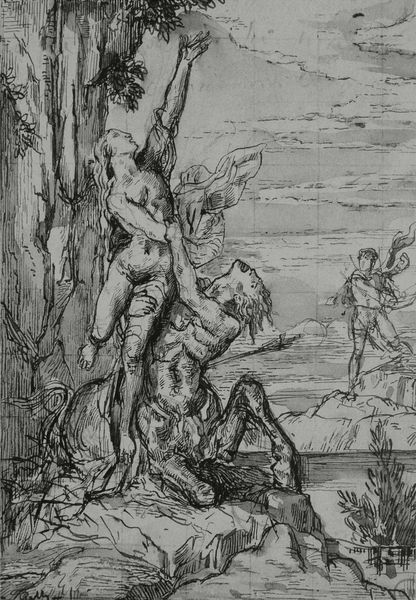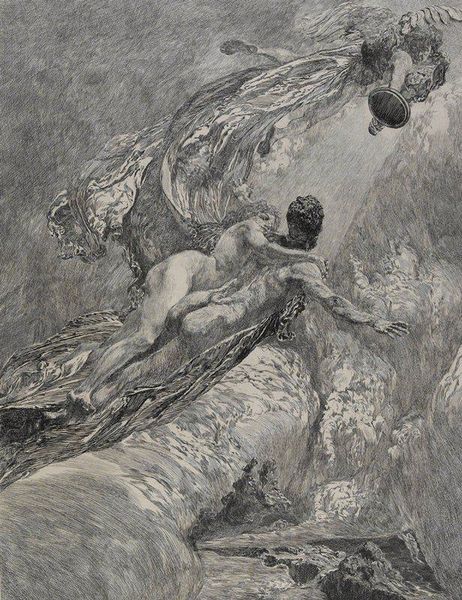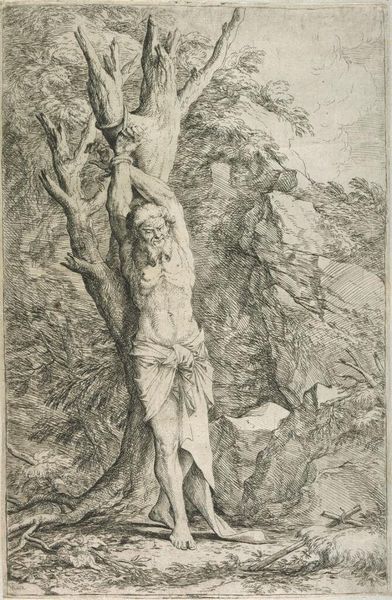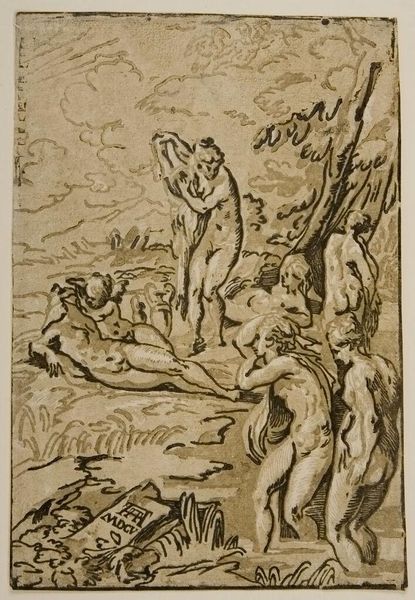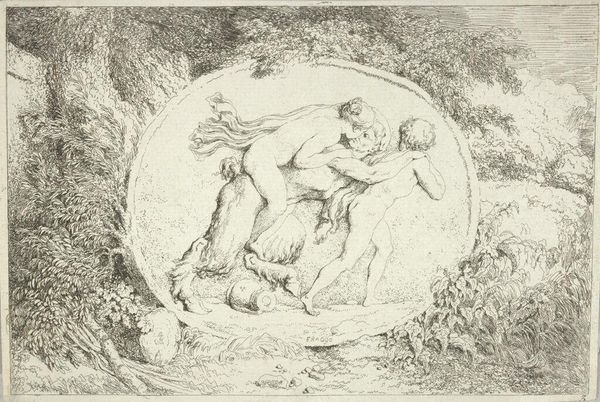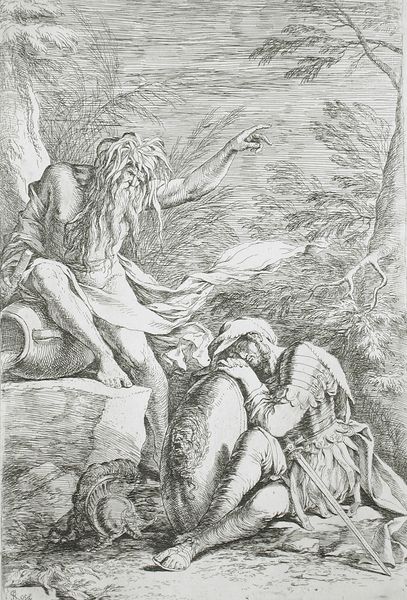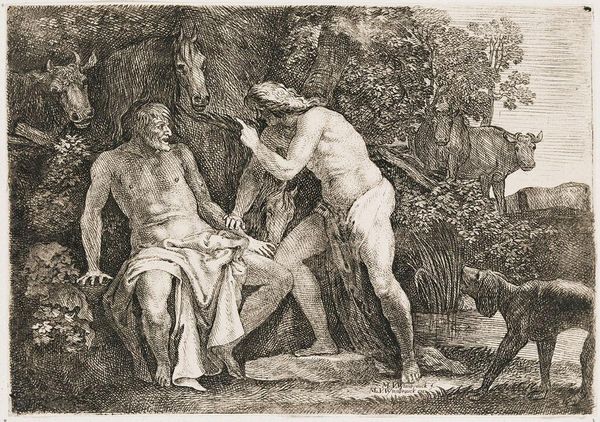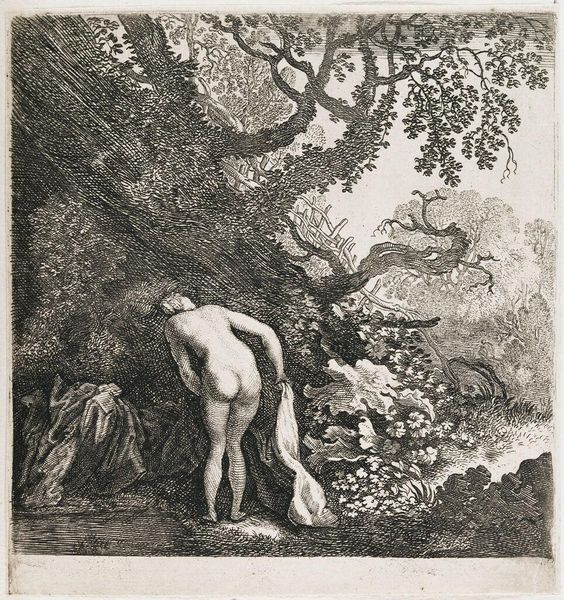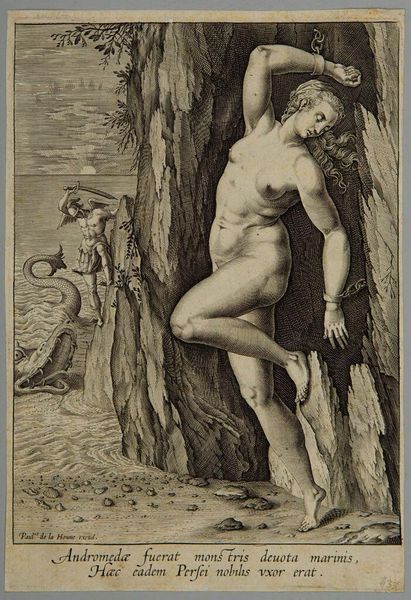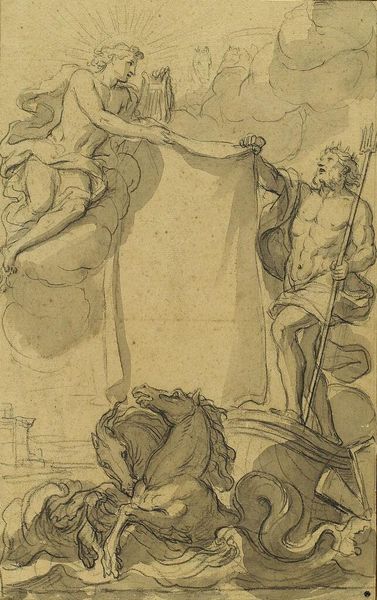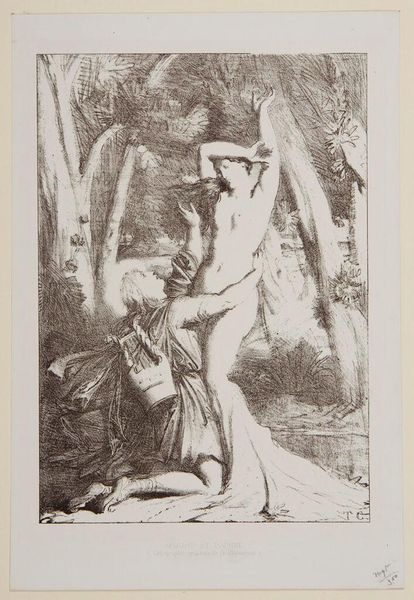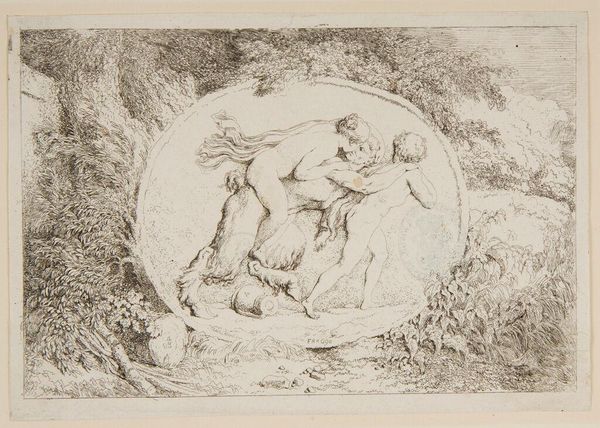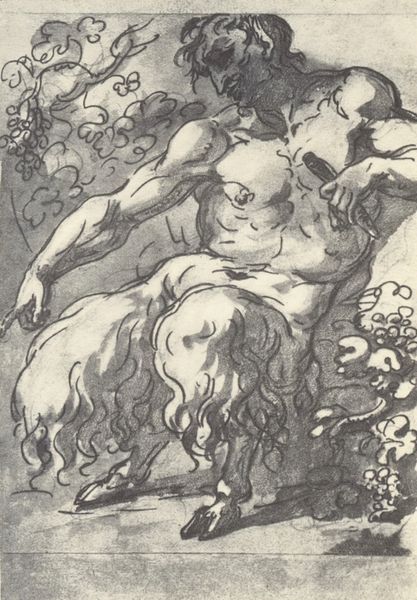
drawing, dry-media, ink, pencil
#
drawing
#
allegory
#
charcoal drawing
#
figuration
#
dry-media
#
ink
#
pencil drawing
#
pencil
#
symbolism
#
history-painting
#
academic-art
#
charcoal
#
nude
Copyright: Public Domain: Artvee
Editor: Gustave Moreau's "Victimes Du Sphinx," made in 1860, seems to capture a very somber scene using dry media like pencil and charcoal. I’m struck by the looming Sphinx and the figures dangling precariously; it evokes a feeling of desperation. How do you interpret this work, considering its symbolic weight? Curator: This drawing is steeped in layers of cultural memory. The Sphinx, perched atop the craggy precipice, is more than just a mythical beast; she embodies the allure and danger of ancient wisdom. See how Moreau renders her almost serenely, adorned with a crown, contrasting with the chaotic struggle of the victims clinging to the cliffside. Notice the skull near her—what do you think it represents in this context? Editor: It suggests mortality, the cost of failing to answer her riddle. So, the Sphinx isn't just a monster, but a gatekeeper to knowledge with deadly consequences? Curator: Precisely. Moreau is exploring the romanticized, yet perilous, pursuit of knowledge. The figures represent humanity’s constant confrontation with the unknown. The contrast in textures, from the soft charcoal of the sky to the sharp lines defining the rocks and figures, amplifies the tension. Do you notice how this tension creates a dialogue between classical mythology and the modern anxieties of the 19th century? Editor: Yes, I see how it’s not simply a retelling of a myth, but a reflection on humanity’s timeless quest for answers and the risks involved. The drawing has layers that extend beyond just the surface narrative. Curator: Exactly. And by using enduring symbols, Moreau taps into our collective consciousness, making the struggle feel perpetually relevant. Editor: I never thought about how classical figures can also be timeless reflections of modernity. That gives me a lot to consider.
Comments
No comments
Be the first to comment and join the conversation on the ultimate creative platform.
